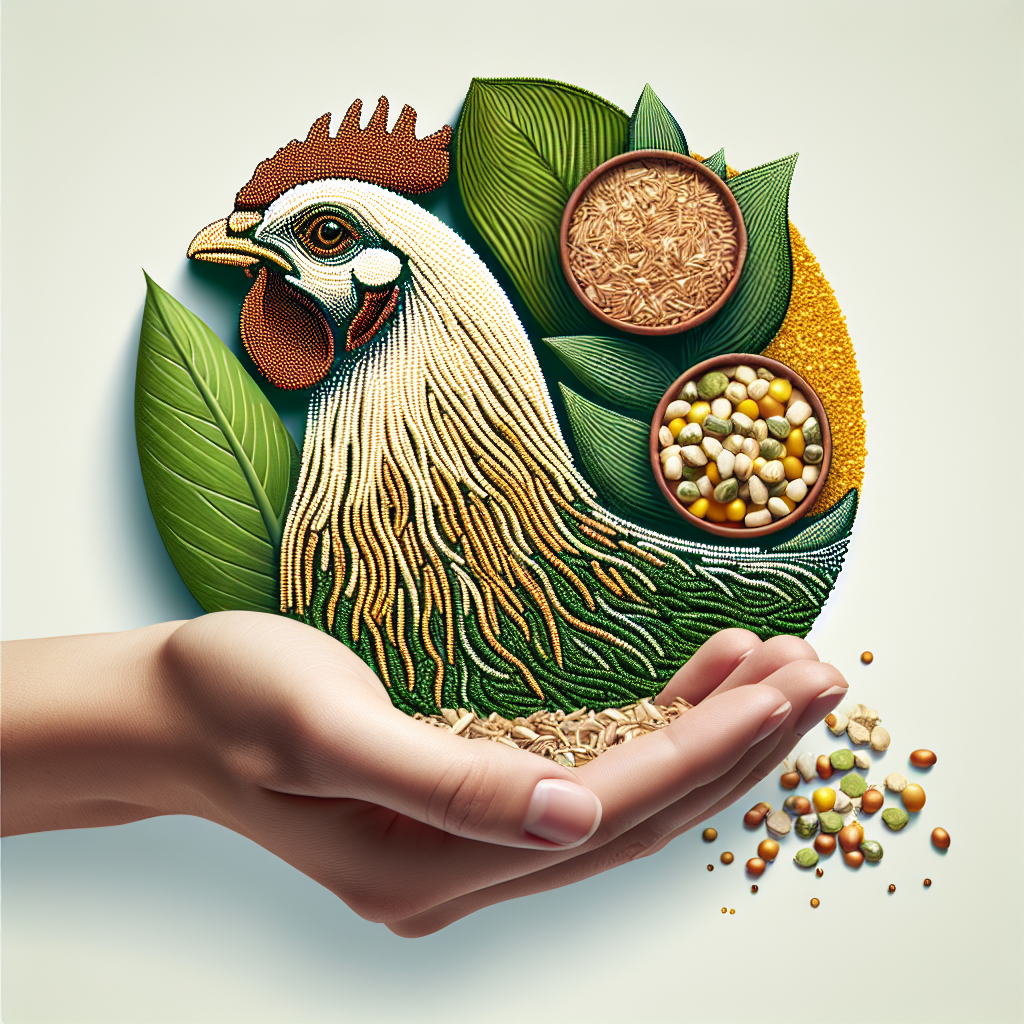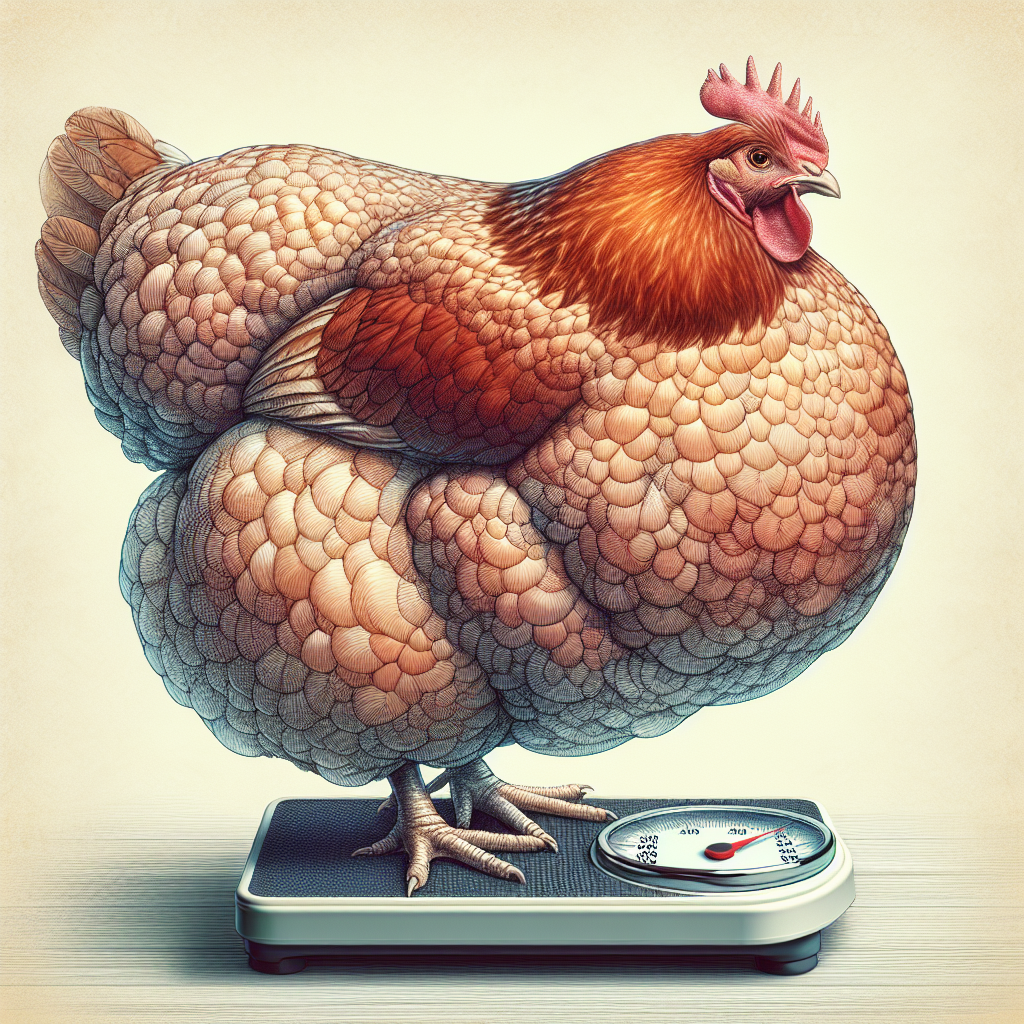Have you ever wondered how the feed type can impact the taste and quality of eggs and meat? It turns out that the answer lies in the exciting world of animal nutrition. The feed type plays a crucial role in not only shaping the flavor but also affecting the overall quality of eggs and meat. By understanding the relationship between feed and taste, we can make more informed choices when it comes to consuming these protein-rich delights. Whether you’re a conscious consumer or simply curious about the science behind it, let’s explore how feed types influence the taste and quality of eggs and meat.
Feed Type and Its Impact on Egg Quality
Nutritional Composition of Feed
The nutritional composition of the feed has a significant impact on the quality of eggs. The feed provides essential nutrients, including proteins, vitamins, minerals, carbohydrates, and fats, which are necessary for the growth and development of the hen. A well-balanced and nutrient-rich feed ensures that the hen receives all the necessary components to produce high-quality eggs. Proteins, for example, play a crucial role in the formation of egg whites, while vitamins and minerals contribute to the overall health and vitality of the hen, ultimately affecting the quality of the eggs produced.
Antioxidant Content in Feed
The antioxidant content in the feed is another important factor in egg quality. Antioxidants help prevent the oxidative damage to cells, including those involved in egg production. By including antioxidants in the feed, such as vitamin E and selenium, hens are able to maintain optimal egg quality. These antioxidants protect the lipids in the egg yolk from oxidation, ensuring that the eggs have a longer shelf life and maintain their nutritional value.
Omega-3 Fatty Acid Enriched Feed
The inclusion of omega-3 fatty acids in the feed can greatly enhance the quality of eggs. Omega-3 fatty acids, such as those found in flaxseed or fish oil, have been shown to improve egg production parameters, including larger egg size and increased yolk color intensity. Additionally, omega-3 enriched eggs have higher levels of beneficial fatty acids, such as EPA and DHA, which are important for brain and heart health. Offering these health benefits to consumers makes omega-3 enriched eggs a popular choice.
Feed Contamination and Egg Quality
When it comes to feed, it’s essential to ensure that it is free from contaminants. Feed contaminated with toxins, pesticides, or heavy metals can have a detrimental effect on egg quality. Contaminated feed can lead to the accumulation of harmful substances in the hens’ bodies, which can be transferred to the eggs they produce. This can affect the nutritional value and safety of the eggs. Therefore, it is crucial to source feed from reputable suppliers and regularly test for potential contaminants to ensure high-quality and safe eggs.
Effects of Feed on Meat Quality
Feed and Meat Flavor
The feed given to animals can significantly influence the flavor of their meat. For example, animals fed a diet rich in grains may produce meat with a sweeter and milder flavor, while those on a forage-based diet may have meat with a more robust and earthy taste. The feed’s ingredients, such as corn or grass, can impart distinct flavors to the meat, creating unique taste profiles for consumers to enjoy.
Color and Texture of Meat
The feed type can also impact the color and texture of meat. For instance, animals fed a diet high in beta-carotene, such as grass-fed cattle, tend to have meat with a richer, deeper color. This is because beta-carotene is converted to vitamin A, which plays a role in the coloration of the meat. The texture of the meat can also be influenced by the feed, with some feeds leading to tender and succulent meats, while others may result in tougher and chewier cuts.
Marbling and Fat Content
Marbling, the presence of intramuscular fat, is an important factor in meat quality. The feed given to animals can impact the degree of marbling in their meat. For example, animals fed a diet with higher fat content, such as grain-based feeds, are more likely to develop marbling. Marbling contributes to the juiciness, tenderness, and flavor of the meat.
Feed Antibiotics and Hormones
The use of antibiotics and hormones in animal feed can also affect meat quality. Antibiotics may be used to promote growth and prevent diseases in livestock, but their presence in meat can have implications on human health. Hormones, on the other hand, are sometimes used to enhance animal growth and performance. However, their use is regulated to ensure the safety of consumers. It is important to consider the sourcing and practices surrounding the use of antibiotics and hormones in animal feed to maintain meat quality and consumer well-being.
Comparing Different Feed Types
Organic Feed
Organic feed refers to feed that is produced without the use of synthetic pesticides, fertilizers, hormones, or antibiotics. This type of feed is typically made from high-quality organic grains and plants, ensuring that the animals receive a natural and wholesome diet. Organic feed can have a positive impact on the quality of eggs and meat, as it avoids the potential contaminants associated with conventional feed. However, organic feed may also come at a higher cost due to the stricter standards and regulations associated with its production.
Grass-Fed Feed
Grass-fed feed primarily consists of fresh or dried grass, allowing animals to graze freely. This feed type is known to produce meat that is higher in beneficial nutrients such as omega-3 fatty acids and conjugated linoleic acid (CLA). Grass-fed meat is typically leaner, with a richer flavor profile. The natural and varied diet of animals on grass-fed feed can contribute to the overall quality and taste of the meat.
Conventional Feed
Conventional feed refers to feed that may contain grains, soybeans, and other ingredients that are conventionally produced. This type of feed is commonly used in commercial animal production. While conventional feed can provide the necessary nutrients for animals’ growth, it may also contain additives, pesticides, or genetically modified organisms (GMOs) that can affect the quality of the eggs and meat. It is important for producers to carefully choose suppliers and monitor feed quality to ensure optimal results.
Corn vs. Soy-Based Feed
Corn and soy-based feeds are commonly used in animal diets due to their availability and nutritional composition. Each feed type has its own impact on the taste and quality of the eggs and meat produced. Corn-based feed is typically higher in energy and can contribute to the marbling and tenderness of meat. On the other hand, soy-based feed provides essential amino acids and can enhance the nutritional value of the eggs. The specific composition of the feed and the desired end products should be taken into consideration when choosing between corn and soy-based feed.
Feed Type and Egg Taste
Feed Flavors Transferred to Eggs
When hens consume feed, the flavors of the feed can be transferred to the eggs they lay. This phenomenon is particularly evident in eggs laid by hens given feeds with distinct flavors, such as those containing herbs or spices. The feed flavors can subtly infuse into the eggs, providing consumers with a unique and flavorful experience. Experimenting with different feed flavors can offer a range of taste options for those seeking variety in their eggs.
Feed and Egg Yolk Color
The feed type plays a significant role in determining the color of the egg yolk. For example, hens consuming feed with high levels of yellow pigments, such as corn or marigold petals, produce eggs with vibrant yellow yolks. Alternatively, hens consuming a diet composed mostly of grains may lay eggs with lighter-colored yolks. The color of the egg yolk can have a visual impact on consumers and may also be associated with certain nutrient profiles.
Odor Components in Eggs
The feed type can influence the odor profile of eggs. Different feeds can impart various aromatic compounds to the eggs, giving them distinct smells. For instance, eggs produced by hens fed a diet rich in fish meal may have a subtle fishy odor. Similarly, eggs from hens consuming feed with herbs or spices may have a pleasant aromatic scent. The odor components in eggs, influenced by the feed, can contribute to the overall sensory experience for consumers.
Feed Type and Meat Flavor
Feed Aroma Transferred to Meat
Similar to eggs, the flavors and aromas of the feed can be transferred to the meat of animals. This occurs because the feed’s components are metabolized by the animal, potentially influencing the flavor and aroma of the meat produced. For example, animals consuming feed with herbs, such as rosemary or thyme, may impart subtle herbal notes to their meat. The feed’s aroma can enhance the overall flavor profile and enjoyment of the meat for consumers.
Effects on Poultry Meat Flavor
The feed type has a significant impact on the flavor of poultry meat. For chicken, a diet rich in grains or corn can produce a milder and sweeter flavor compared to a forage-based diet, which can result in a more pronounced and savory taste. Feed ingredients and formulations can influence the poultry’s overall diet, leading to variations in the flavor profiles of the meat. Exploring different feed types can offer consumers a range of poultry meat flavors to suit their preferences.
Effects on Beef and Pork Flavor
The flavor of beef and pork can also be influenced by the feed given to the animals. For example, grass-fed beef tends to have a distinct flavor, often described as slightly earthy and grassy. This is due to the diet of the animal, which primarily consists of grazing on grass. On the other hand, grain-fed beef can have a milder and sweeter flavor. Similarly, the feed given to pigs can impact the flavor of pork, with diets containing certain grains or forage resulting in unique taste characteristics. The feed type plays a crucial role in developing the desired flavor profiles of beef and pork.
Feed Type and Egg Quality
Shell Strength and Thickness
The feed type can impact the strength and thickness of eggshells. Calcium, obtained through the feed, is essential for the development of strong eggshells. Hens consuming diets lacking in calcium may produce eggs with thinner or weaker shells, potentially increasing the risk of breakage during handling or transportation. Providing a feed rich in calcium and other essential minerals promotes the production of eggs with robust and durable shells, ensuring their quality and protectiveness.
Albumen and Yolk Quality
The feed’s nutritional composition directly affects the quality of both the albumen (egg white) and yolk. Adequate protein intake through the feed is crucial for the development of high-quality albumen, which contributes to the overall structure and stability of the egg. Additionally, the vitamins and minerals obtained from the feed play a role in maintaining the yolk’s color and integrity. A well-balanced diet promotes optimal albumen and yolk quality, resulting in eggs with desirable attributes.
Egg Size and Weight
The feed type can influence the size and weight of eggs produced. The nutritional composition of the feed, particularly the energy content, can impact the rate of egg formation and egg size. Hens consuming a diet rich in energy sources, such as fats and carbohydrates, are more likely to produce larger eggs. Alternatively, hens on a lower energy diet may produce smaller eggs. The feed type can be adjusted to meet the desired egg size requirements, providing flexibility for producers and satisfying consumer preferences.
Feed Type and Meat Quality
Meat Color and Appearance
The feed type can affect the color and appearance of meat. For example, the inclusion of ingredients rich in pigments, such as grass or marigold petals, can result in meat with a more vibrant color. The visual appeal of meat is an important factor in consumer preferences and expectations. By carefully selecting and formulating the feed, producers can influence the color and appearance of the meat to meet market demands.
Tenderness and Texture
The tenderness and texture of meat can be influenced by the feed given to animals. A well-balanced diet that promotes muscle development and growth can lead to tender and succulent meat. Conversely, certain feeds or feeding practices may result in tougher and chewier meat. The composition of proteins and fats in the feed, as well as the animal’s overall diet, can impact the final texture of the meat. Ensuring optimal feed formulation and feeding practices can contribute to the desired tenderness and texture of the meat.
Fat Content and Marbling in Meat
The feed type plays a crucial role in determining the fat content and marbling in meat. Different types of feed can result in distinct fat deposition patterns within the muscle tissue. For example, grain-based feeds are known to contribute to higher fat content and marbling in meat compared to forage-based or grass-fed feeds. Marbling adds flavor, tenderness, and juiciness to the meat, making it highly sought after by consumers. Producers can manipulate the feed composition and feeding practices to achieve the desired fat content and marbling in meat.
Role of Nutritional Composition
Protein Content
The protein content in the feed is integral to both egg and meat quality. Proteins are essential for the development of muscles, tissues, and organs, ensuring optimal growth and well-being of the animals. Adequate protein intake through the feed results in high-quality meat with desirable attributes, such as tenderness and juiciness. Similarly, protein is an important component of eggs, contributing to the structure and texture of the albumen. Maintaining an appropriate protein level in the feed is crucial for optimal egg and meat quality.
Vitamins and Minerals
Vitamins and minerals are vital for the overall health and vitality of animals, as well as for the quality of eggs and meat produced. These micronutrients play various roles, including bone development, immune function, and antioxidant protection. A well-balanced feed that provides an adequate supply of vitamins and minerals ensures the animals receive the necessary nutrients to produce high-quality eggs and meat. Producers must carefully consider the inclusion of vitamins and minerals in the feed formulation to optimize the nutritional content and overall quality of the end products.
Carbohydrate and Fat Levels
Carbohydrates and fats are important sources of energy in animal diets. The levels of carbohydrates and fats in the feed can impact the growth, body composition, and overall quality of the animals. Carbohydrates provide a readily available energy source, while fats contribute to energy reserves and fat deposition within the muscle tissue. The balance between carbohydrates and fats in the feed formulation influences the animal’s energy utilization and can affect meat quality, including tenderness, juiciness, and flavor.
Antioxidants in Feed
Impact on Meat Quality
The inclusion of antioxidants in the feed can have a positive impact on meat quality. Antioxidants help minimize oxidative stress in animals, preserving the quality and flavor of the meat. By preventing lipid oxidation, antioxidants can extend the shelf life of meat and maintain its nutritional value. Additionally, antioxidants contribute to the stability of meat pigments, preventing color changes and ensuring an attractive appearance. Including antioxidants in the feed formulation is a valuable strategy to promote high-quality meat with enhanced shelf life and consumer appeal.
Effects on Egg Shelf Life
Antioxidants in the feed can also influence the shelf life of eggs. By protecting the lipids in the egg yolk from oxidative damage, antioxidants help maintain the freshness and quality of eggs over time. This is particularly important for longer storage periods or if the eggs need to be transported over long distances. Antioxidant-rich feed can contribute to the stability and integrity of eggs, reducing spoilage and extending their shelf life for consumers to enjoy.
Influence on Meat Oxidation
Oxidation is a natural process that can occur in meat, leading to undesirable changes in flavor, texture, and color. Antioxidants in the feed help counteract oxidative stress and prevent or slow down the oxidation of meat lipid compounds. This preserves the quality and sensory characteristics of the meat, allowing for a longer shelf life and maintaining consumer satisfaction. Including antioxidants in the feed provides a proactive approach to mitigate oxidation, ensuring that the meat remains fresh, flavorful, and visually appealing.
Omega-3 Fatty Acid Enriched Feed
Benefits for Meat and Egg Quality
The use of omega-3 fatty acid enriched feed can provide numerous benefits for both meat and egg quality. Omega-3 fatty acids, such as those found in flaxseed or fish oil, are essential for overall health and play a crucial role in brain function, heart health, and inflammation control. By incorporating these beneficial fatty acids into the feed, meat and eggs can become a source of omega-3 for consumers. This enrichment can enhance the nutritional value and market appeal of the end products, providing a desirable option for health-conscious individuals.
Health Impact for Consumers
Consumers can benefit from the inclusion of omega-3 fatty acids in meat and eggs. Omega-3 fatty acids have been associated with various health benefits, including improved cardiovascular health, reduced inflammation, and enhanced brain function. By consuming meat and eggs from animals fed an omega-3 enriched diet, individuals can easily incorporate these essential fatty acids into their diet. This can contribute to overall well-being and provide a convenient and sustainable source of omega-3.
Sustainable Feed Alternatives
Omega-3 fatty acid enriched feed offers a sustainable alternative for the production of meat and eggs. Traditional sources of omega-3, such as fish oil, are limited and may contribute to environmental concerns due to overfishing. By utilizing plant-based sources, such as flaxseed, as an omega-3 supplement in animal feed, the reliance on fish oil can be reduced. This promotes environmental sustainability while still offering consumers the benefits of omega-3 fatty acids in their meat and egg choices.




